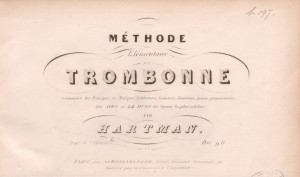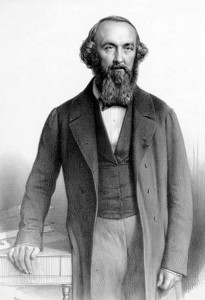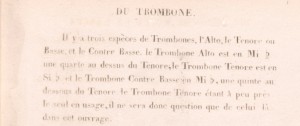I just added the following two entries to the Alto in Treatises page and the Alto Trombone History Timeline. They are noteworthy for a few reasons: 1) Like Berlioz, they describe an alto trombone that is clearly pitched in the E-flat orbit (E-flat and F, respectively), not simply a B-flat tenor with a smaller mouthpiece. 2) They add to the overall tally of treatises and other written sources that clearly put the alto trombone in the E-flat orbit (see the tallies by country here). 3) Like Berlioz, they describe a scenario in France where the alto trombone is rare but not obsolete.
c. 1840—Paris, France: Hartman’s Méthode elémentaire de trombone includes the following information about the pitch and usage of the alto trombone: “There are three types of trombones, alto, tenor or bass, and contrabass. The alto trombone is in E-flat, a fourth above the tenor, tenor trombone is in B-flat, and contrabass trombone in E-flat, a fifth below the tenor trombone. The tenor trombone being nearly the only one in use, it will then be, without question, only about this [one] in this work.” The method book is dated by University of Cambridge’s library catalog as c. 1840, and by Trevor Herbert as “1845?” (Hartman, Methode; Herbert, The Trombone 327).
1844—Paris, France: Composer-musicologist Adrien de La Fage’s entry on trombone in the Encyclopédie des gens du monde offers the following information about the key and usage of alto trombone: “Those dimensions are those of the most used trombone, which is to say the tenor trombone—which in practice is used as a bass trombone; that which is used in orchestras where there is only one trombone…But in the large [or great] orchestras, where three trombones are used, other than the preceding that effectively plays the tenor part, there is the alto trombone, in F, which is a fifth above, and the bass trombone at the inferior octave from the alto trombone; although the bass part is most often played on a tenor trombone” (special thanks to Maximilien Brisson for the translation) (vol. 22, part 1, 292).
